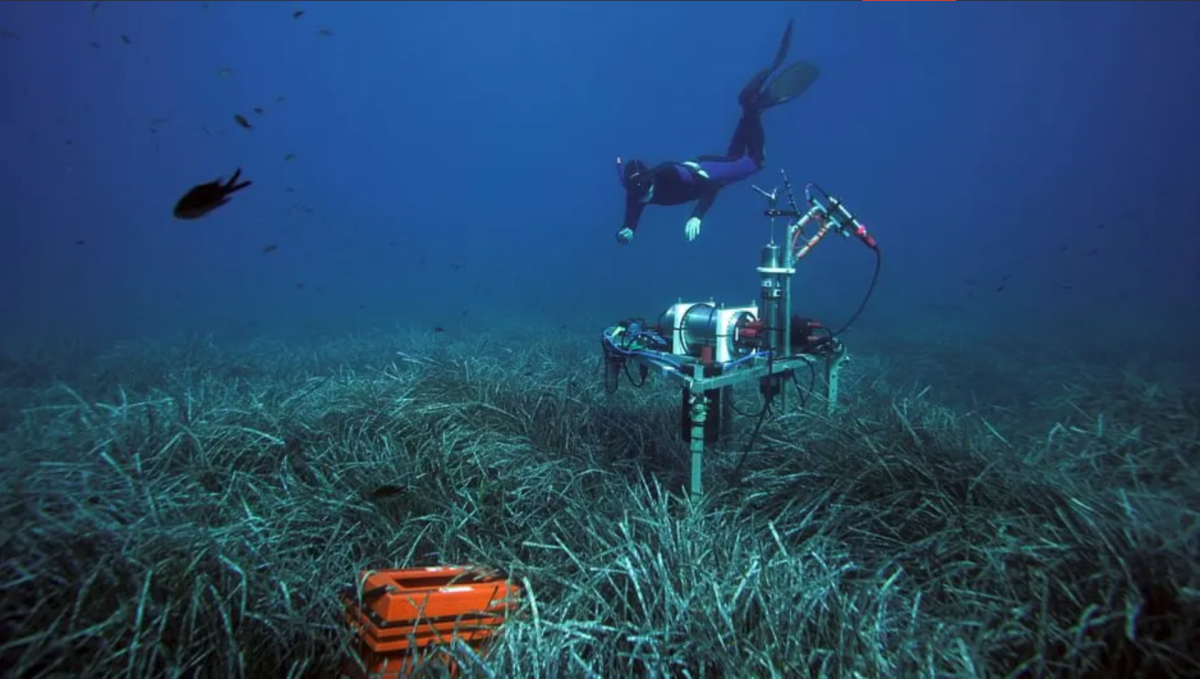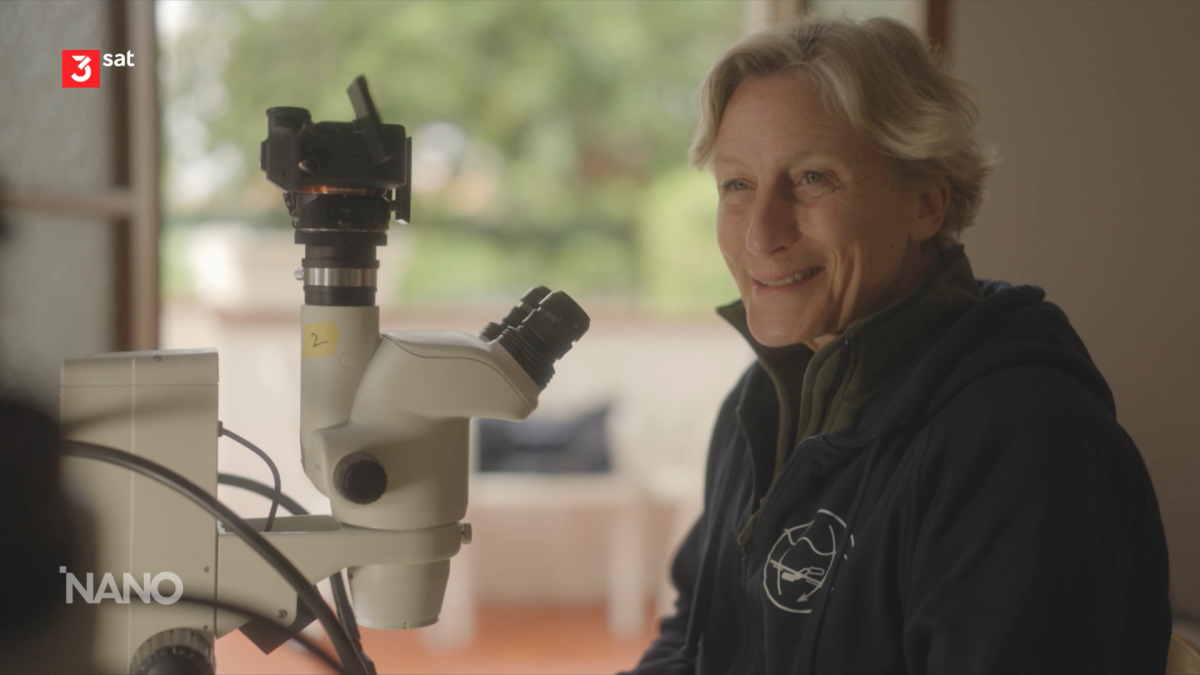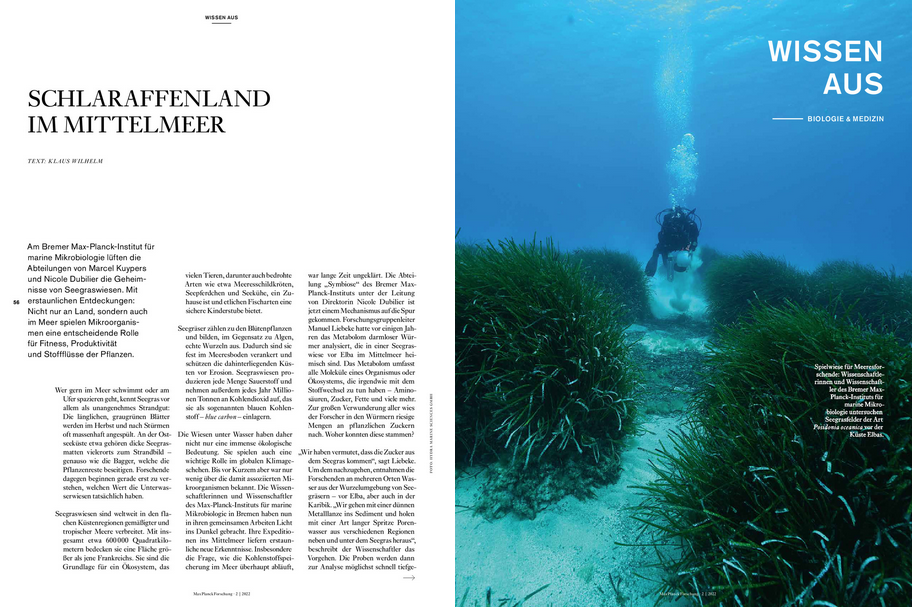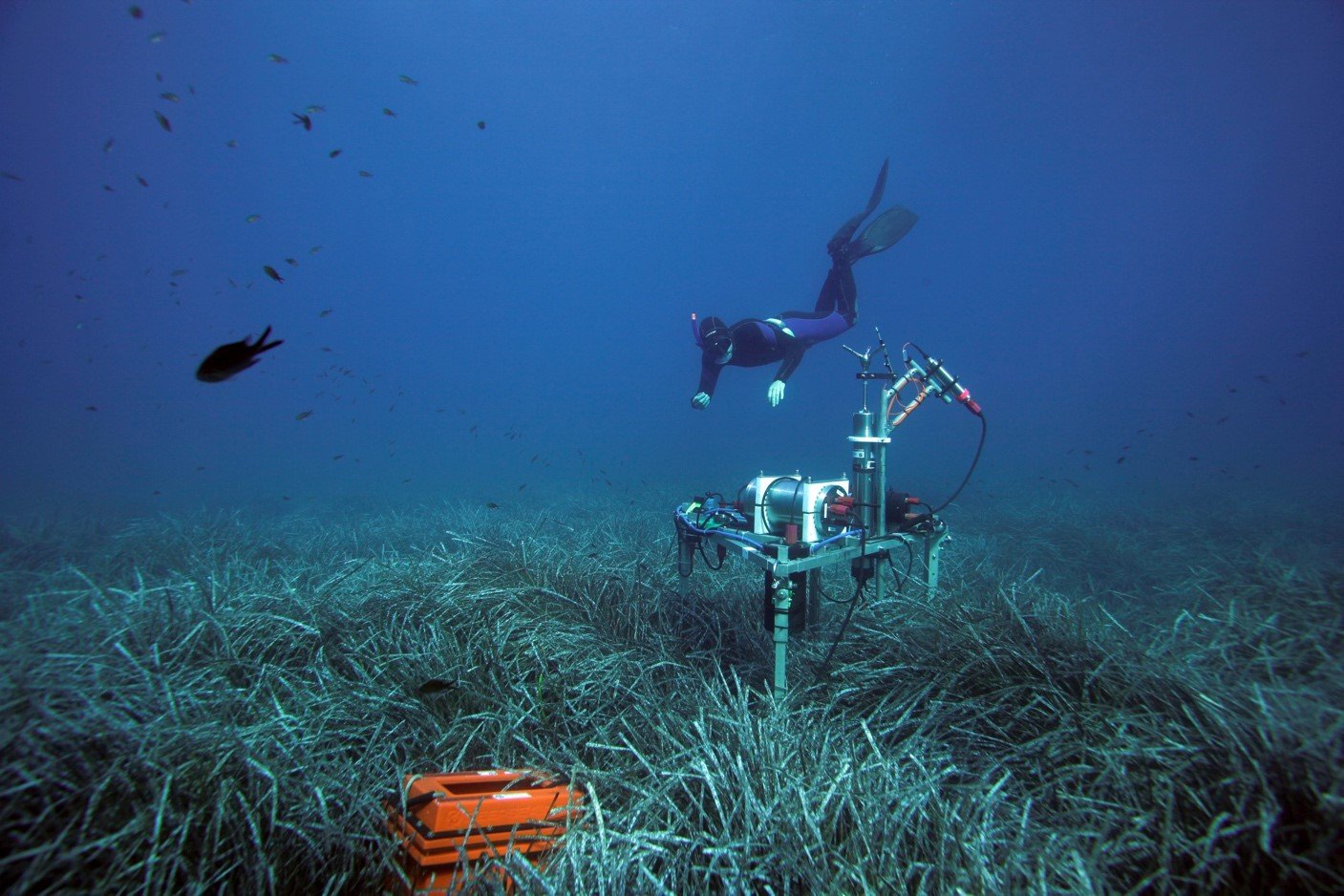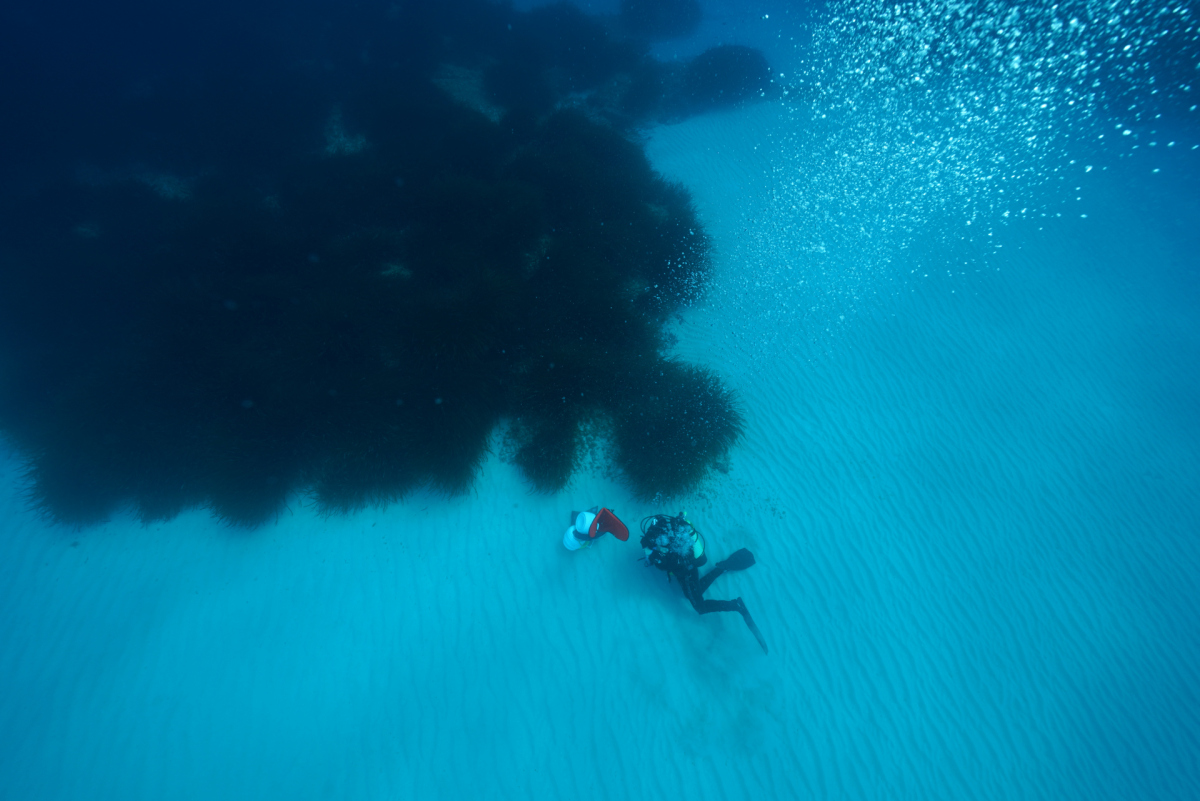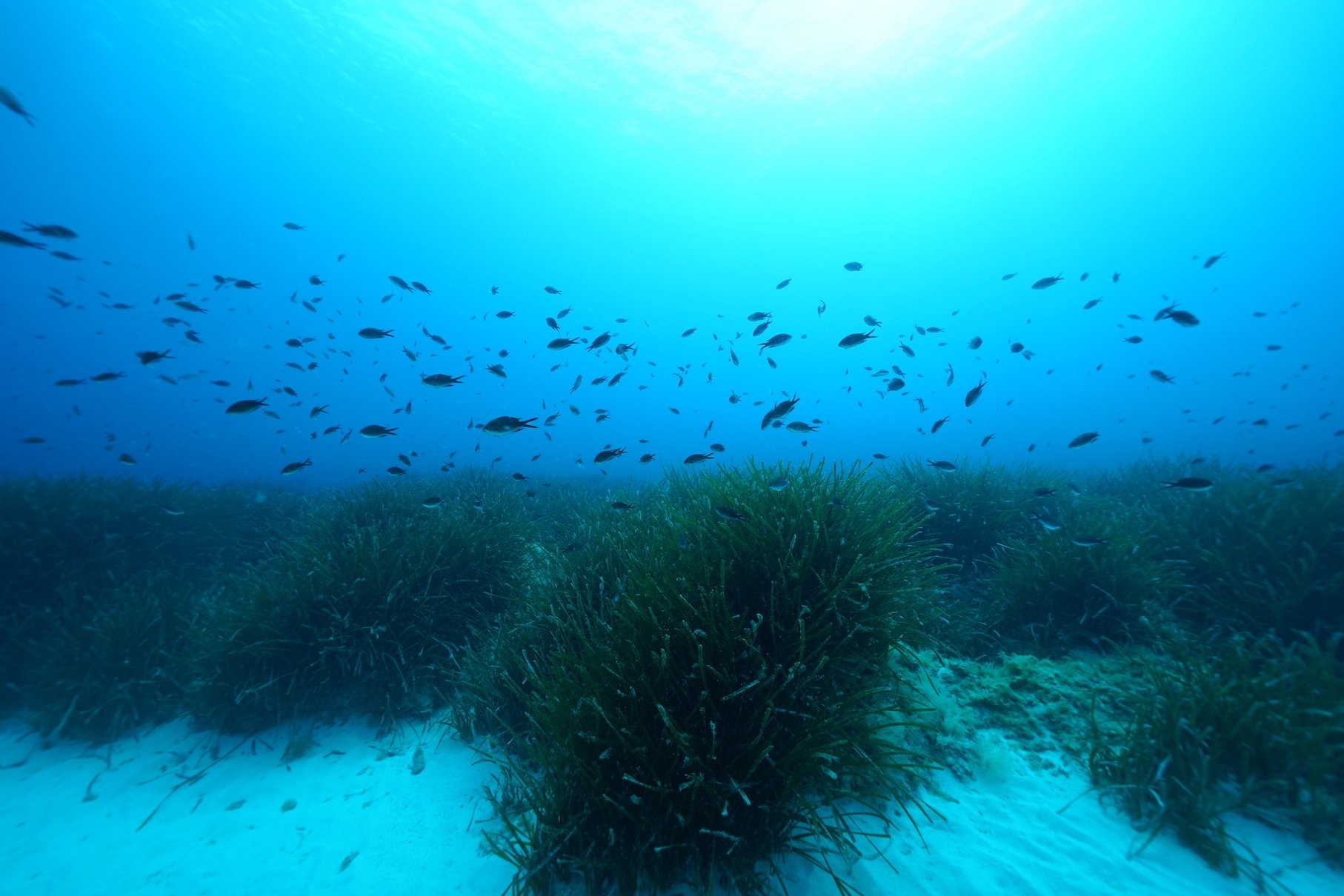- Press Office
- Press releases
- Our seagrass research on television
Our seagrass research on television
Take a look ...
The wonder world of seagrass meadows Climate saviour, nursery, coastal protection
Seagrass not only stores the largest sugar reserves on our planet - this plant protects beaches worldwide from erosion and, with its almost 80,000-year-old seagrass meadows, is perhaps the oldest living thing on earth. Seagrass meadows are nurseries and habitats for countless species; they clean the seawater like a gigantic sewage treatment plant. With these superpowers, seagrass can help to slow down global warming. The documentary accompanies leading seagrass researchers from the Mediterranean to the Baltic Sea.
Director:Florian Guthknecht
Origin:ZDF
Our contribution from minute 13
The superworm - "no mouth, no bum and still happy"
An inconspicuous worm has unexpected abilities. It is an energetic perpetual motion machine that neither eats nor digests. It survives where hardly any life form survives permanently: in an underwater sand desert. It can change its sex or even adopt two sexes if it cannot find a mate or finds the wrong one. If it is split up, its remains live on. This is how the superworm was able to spread worldwide.
Director: Florian Guthknecht
Origin: 3sat/Nano
Our seagrass research in MaxPlanckResearch
Land of plenty in the Mediterranean
At the Max Planck Institute for Marine Microbiology in Bremen, Marcel Kuypers' and Nicole Dubilier's departments are unraveling the mysteries of seagrass meadows. With astonishing discoveries: Not only on land, but also in the sea, microorganisms play a crucial role in the fitness, productivity and material flows of plants.
These are the opening words of a comprehensive article in the Max Planck Society's science magazine MaxPlanckResearch, presenting our diverse research on seagrasses. It deals with their role in the large elemental cycles of nitrogen and carbon as well as with their bacterial subtenants and what that has to do with soft drinks. A worthwhile read!
Learn more ...
Please direct your queries to:
Head of Press & Communications
MPI for Marine Microbiology
Celsiusstr. 1
D-28359 Bremen
Germany
|
Room: |
1345 |
|
Phone: |

